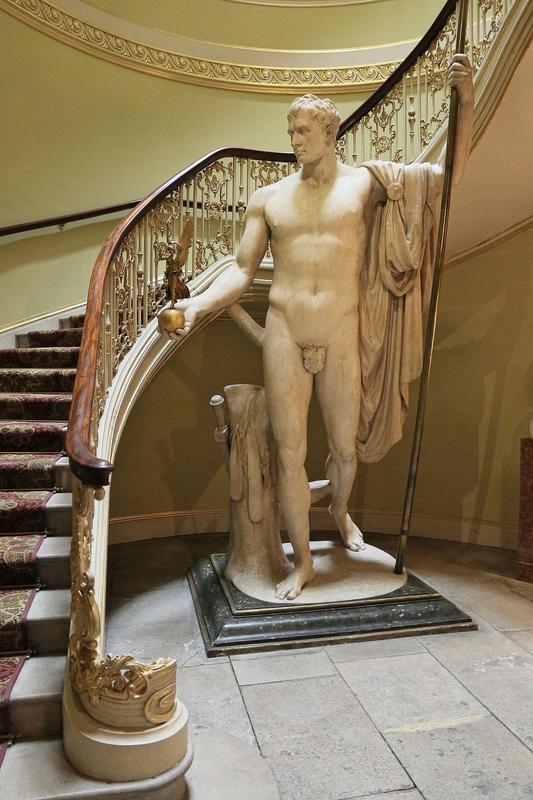More about Napoleon as Mars the Peacemaker

Sr. Contributor
Napoleon wasn’t just a short dead dude when he commissioned Antonio Canova to make this sculpture in 1802.
Napoleon was partying over the fact that he had just become President of Italy and signed the Treaty of Amiens thus bringing peace to England, France, and seemingly all of Europe. Indeed everything was peachy so it’s no wonder that he insisted that Italy’s greatest sculptor, Antonio Canova, come to Paris to mark the occasion with a colossal sculpture of Napoleon as the Roman god of war. Let’s just say that more than Napoleon’s military prowess wound up on display.
The 11-foot tall hottie with marble-hard abs above bears little resemblance to the 5 ft 6 Napoleon we’re all used to. One would think with all the Freudian implications of Napoleon’s obsession with the size of his *ahem* Empire, art collection, bank account, etc. he would be thrilled by this giant display of hyper-masculinity. He hated it. I can’t blame the guy. He’d specifically asked Canova to design him in uniform to honor France, also, having followed Mars’ lead ushering in “peace” through military tactics it seems reasonable that he wanted to be portrayed in a dignified fashion. Yes, he should have realized that as an Italian neo-classicist Canova’s idea of “dignified” would mean hot and naked, but as one of the most powerful men in the world, he expected to get what he’d asked for. When Napoleon finally saw the piece in the Louvre in 1811 he was 42 years old, flabby, and not willing to be body-shamed by a statue. He deemed it “too athletic” and demanded it be removed from public view.
The statue remained hidden behind a screen until it was bought by the British government in 1816 as a gift to the Duke of Wellington. Wellington was the English hero who squashed Napoleon in the Battle of Waterloo just a year earlier. Sick burn, England. The sculpture still resides in Wellington’s house where it can remain forever due to the reinforced floor beneath it.
Food for thought: Canova also did a sculpture of Napoleon’s promiscuous and daring sister Pauline. 1808’s Venus Victrix displays Pauline in the buff (at her insistence) as her supposed ancestor and goddess of love, Venus. In Greek/ Roman mythology Venus and Mars are ardent lovers representing the deep connection between love and war. In these two sculptures we see them not just as lovers, but as sexy naked siblings. Art, it’s fun for the whole family!
Featured Content
Here is what Wikipedia says about Napoleon as Mars the Peacemaker
Napoleon as Mars the Peacemaker is a colossal heroic nude statue by the Italian artist Antonio Canova, of Napoleon I of France in the guise of the Roman god Mars. He holds a gilded Nike or Victory standing on an orb in his right hand and a staff in his left. It was produced between 1802 and 1806 and stands 3.45 metres to the raised left hand. Once on display in the Louvre in Paris, it was purchased from Louis XVIII in 1816 by the British government, which granted it to the Duke of Wellington. It is now on display in Robert Adam's stairwell at the Duke's London residence, Apsley House.

Check out the full Wikipedia article about Napoleon as Mars the Peacemaker












